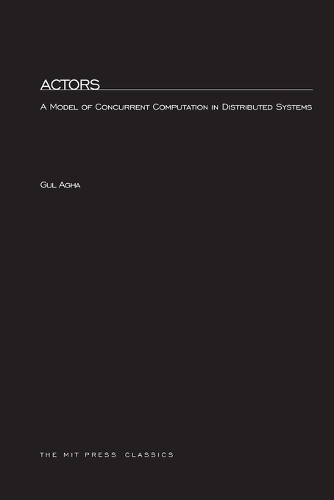
Actors: A Model of Concurrent Computation in Distributed Systems
(Paperback)
Publishing Details
Actors: A Model of Concurrent Computation in Distributed Systems
By (Author) Gul Agha
MIT Press Ltd
MIT Press
17th December 1986
United States
Classifications
Professional and Scholarly
Non Fiction
004.36
Physical Properties
Paperback
190
Width 152mm, Height 229mm
331g
Description
The transition from sequential to parallel computation is an area of critical concern in today's computer technology, particularly in architecture, programming languages, systems, and artificial intelligence. This book addresses central issues in concurrency, and by producing both a syntactic definition and a denotational model of Hewitt's actor paradigm-a model of computation specifically aimed at constructing and analyzing distributed large-scale parallel systems-it substantially advances the understanding of parallel computation. Contents Introduction . General Design Decisions . Computation in ACTOR Systems . A More Expressive Language . A Model for ACTOR Systems . Concurrency Issues . Abstraction and Compositionality . Conclusions
Reviews
"The model described is more powerful than previous ones because it provides for dynamic growth and reconfiguration, and it uses an open systems approach. This extension is essential for work in artificial intelligence and related areas where it is difficult, in typical applications to make advanced estimates of the computational resources required. The Feynman-like diagrams Agha introduces are a particularly good technique for illustrating the interactions in asynchronous, concurrent systems. They should find increasing use in serious studies of the problems accompanying parallelism. Overall, this is a seminal piece of work, carefully tied to previous research." John H. Holland, University of Michigan
Author Bio
Gul Agha is Director of the Open Systems Laboratory at the University of Illinois at Urbana-Champaign and an Associate Professor in the Department of Computer Science.
